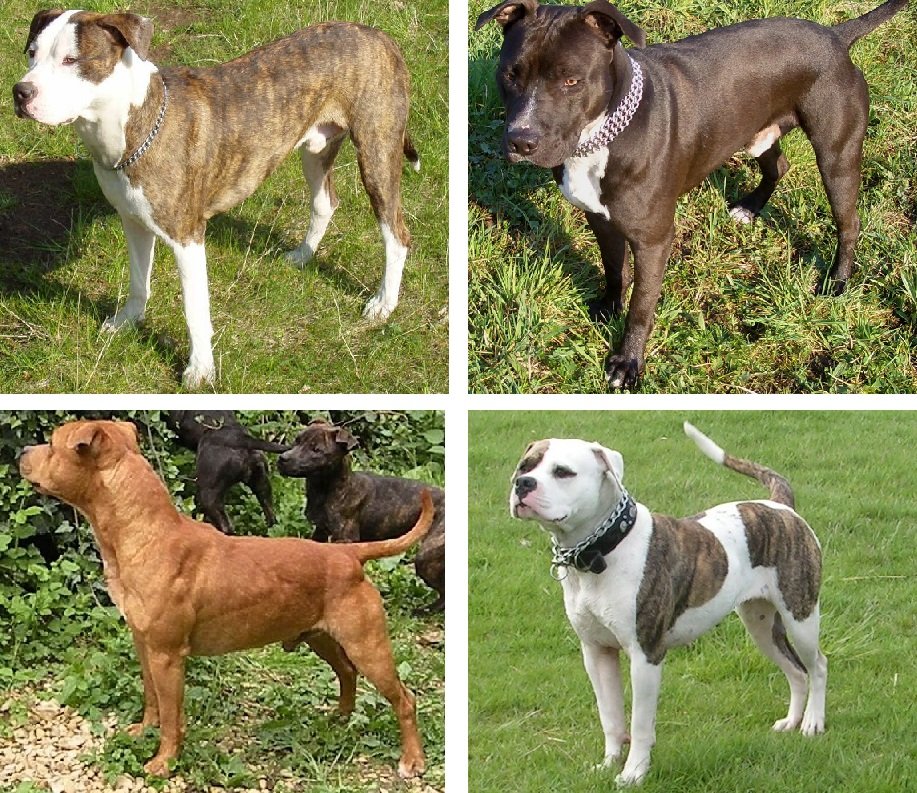Did you know that the term “pitbull” actually refers to a variety of breeds rather than just one specific breed? The term pitbull is often associated with aggression and danger, but what is the origin behind this controversial label?
The term “pitbull” originates from the combination of two words: “pit” and “bull.” The name is derived from the historical practice of using these dogs in pit fights against bulls or other animals. In the mid-19th century, these fights were quite popular as a form of entertainment. However, over time, the association of pitbulls with fighting led to a negative perception of the breed. Despite this stigma, pitbulls are known for their loyalty and affection towards their human companions, and they can be gentle and loving pets when properly trained and socialized. It’s essential to remember that a dog’s behavior is shaped by various factors, including their genetics, upbringing, and environment. Education and responsible ownership are crucial in changing the perception surrounding pitbulls and promoting positive interactions between humans and these magnificent dogs.
Intrigued by the term “pitbull”? The term actually refers to a group of dog breeds, including the American Pit Bull Terrier and the American Staffordshire Terrier. The name originated from the early 19th century, when these dogs were bred for the sport of pit fighting. Despite their history, pitbulls are known for their loyalty, intelligence, and affectionate nature. Contrary to popular belief, when properly trained and socialized, they can be wonderful family pets.

Where Does the Term Pitbull Come From? Unraveling the Origins of a Controversial Name
In the world of dog breeds, few have sparked as much controversy as the Pitbull. Known for their strength, loyalty, and sometimes misunderstood nature, Pitbulls have a complex history that extends beyond their physical attributes. But where does the term “Pitbull” come from? In this article, we delve into the origins of this name and shed light on the diverse ancestry and evolution of this iconic breed.
1. The Evolution of a Breed: From Bull-baiting to Companion
The history of Pitbulls can be traced back to 19th-century England, where they were initially bred for the bloodsport of bull-baiting. This cruel practice involved dogs engaging in combat with bulls, a terrifying spectacle that showcased the strength and tenacity of these animals. However, as bull-baiting became increasingly outlawed and frowned upon, breeders shifted their focus to create a more sociable and versatile dog.
The term “Pitbull” was first used to describe a variety of breeds that shared physical traits, such as strength, agility, and a determined disposition. These breeds, including the Staffordshire Bull Terrier and the American Pit Bull Terrier, were selectively bred for their working abilities and were often used in various tasks, from herding cattle to hunting game. The term “Pit” is derived from the arenas, known as “pits,” where these dogs were pitted against other animals or each other.
2. The Influence of Crossbreeding: The American Pitbull Terrier
As the breed continued to evolve, the American Pit Bull Terrier emerged as a distinct and recognizable breed. The American Pit Bull Terrier was the result of crossbreeding between various Bulldog and Terrier breeds, with the aim of creating a dog that embodied both strength and agility.
In the early 20th century, the American Pit Bull Terrier gained popularity in the United States for its versatility and loyalty. They were seen not only as working dogs but also as family companions. Their unwavering loyalty and protective nature endeared them to many families, earning a reputation as fantastic family pets.
The term “Pitbull” became firmly associated with this breed due to its strong resemblance to the original dogs involved in the bull-baiting sport. However, it’s important to note that the term is often used as an umbrella term that encompasses various breeds and mixes with similar physical traits.
3. The Controversy and Misconceptions Surrounding Pitbulls
Despite their loyal and affectionate nature, Pitbulls have become mired in controversy due to cases of aggression and media sensationalism. This negative portrayal has led to widespread misconceptions about the breed, often perpetuating stereotypes that fuel fear and mistrust.
One of the main contributing factors to these misconceptions is a lack of understanding and education about the breed. While it is true that Pitbulls have a strong prey drive and can be protective, proper training, socialization, and responsible ownership play a crucial role in shaping their behavior. It’s essential to remember that a dog’s behavior is a result of their genetics, upbringing, and environment, rather than an inherent evil nature.
Pitbulls have long been victims of breed-specific legislation (BSL) that unfairly targets them based on their appearance. However, organizations and advocates continue to fight against these laws, emphasizing the importance of responsible ownership and individual assessment of each dog’s behavior.
Unraveling the Origins: Debunking Myths and Highlighting the Truth
4. The Staffordshire Bull Terrier: A Piece of the Pitbull Puzzle
One key breed that contributed to the development of the American Pit Bull Terrier is the Staffordshire Bull Terrier. Originating in Staffordshire, England, this breed played a significant role in shaping the traits and characteristics associated with Pitbulls.
The Staffordshire Bull Terrier shares a common ancestry with the American Pit Bull Terrier, stemming from the early crossbreeding between Bulldogs and Terriers. Both breeds display similar physical traits, such as muscular bodies, strong jaws, and tenacity.
However, it’s vital to note that the Staffordshire Bull Terrier is a distinct breed in its own right, with its own breed standard and history. Although they may share some similarities with Pitbulls, they are separate entities with their own purpose and characteristics.
5. Beyond the American Pit Bull Terrier: Other Breeds Under the Pitbull Umbrella
When discussing the origins of the term “Pitbull,” it’s essential to recognize that it doesn’t refer exclusively to the American Pit Bull Terrier. The term is often used as an umbrella term for several breeds and mixes that exhibit similar physical traits.
Some of the breeds commonly associated with the “Pitbull” label include the American Staffordshire Terrier, the Bull Terrier, and the American Bully. These breeds all share a similar heritage and are products of selective breeding for specific traits like strength, athleticism, and loyalty.
While these breeds have their own distinct characteristics and breed standards, their similarities in appearance have led to their inclusion within the broader Pitbull category.
6. Pitbulls as Therapy and Service Dogs: Their Second Chance
Despite the controversies surrounding Pitbulls, their admirable qualities have not gone unnoticed, leading to their increasing use as therapy and service dogs. Pitbulls possess a wonderful ability to connect with humans, displaying empathy, emotional intelligence, and a desire to please.
These qualities make them well-suited for roles as therapy and service dogs, where their calming presence and love for people can positively impact individuals with physical or emotional challenges. Organizations and programs dedicated to harnessing the unique abilities of Pitbulls continue to emerge, focusing on their potential for healing and service.
7. The Future of Pitbulls: Shifting Perceptions and Responsible Ownership
As we look towards the future, it’s vital to recognize the significant role education and responsible ownership play in shaping the perception of Pitbulls. By dispelling myths, challenging stereotypes, and promoting understanding, we can help shift the narrative surrounding these amazing dogs.
Responsible ownership entails providing proper training, socialization, and care for Pitbulls, as well as advocating for their rights and challenging discriminatory legislation. By focusing on the individual behavior and temperament of each dog, rather than painting an entire breed with a broad brush, we can foster a more inclusive and compassionate understanding of Pitbulls.
Pitbulls deserve a chance to thrive, be loved, and be seen for the remarkable companions they can be. By embracing their true nature and debunking the misconceptions, we can pave the way for a brighter future where Pitbulls are valued and appreciated for the incredible dogs they are.
Key Takeaways: Where Does the Term Pitbull Come From?
- The term “pitbull” refers to a type of dog breed, not a specific breed.
- It originated from the combination of bulldogs and terriers in the 19th century.
- Pitbulls were initially bred for blood sports like bull-baiting and ratting.
- Over time, they gained popularity as loyal and protective family pets.
- However, pitbulls are often misunderstood and face breed-specific legislation and stigma.
Frequently Asked Questions
Here are some common questions related to the origin of the term “pitbull.”
1. How did the term “pitbull” come about?
The term “pitbull” originated from the breed of dogs used for pit fighting in the 18th century. These dogs were bred for their strength and agility, specifically for fighting in pits or arenas. Over time, the term “pitbull” became synonymous with this breed.
It is important to note that “pitbull” is not an official breed, but rather an umbrella term that includes several breeds, such as the American Pit Bull Terrier, American Staffordshire Terrier, and Staffordshire Bull Terrier.
2. Are pitbulls inherently aggressive?
No, pitbulls are not inherently aggressive. Like any other dog breed, their behavior is influenced by various factors, including genetics, socialization, training, and environment. It is a common misconception that all pitbulls are aggressive or dangerous. In fact, many pitbulls are friendly, affectionate, and make wonderful family pets when properly raised and trained.
However, due to their history of being selectively bred for strength and tenacity in pit fighting, some individual pitbulls may display more assertive or dominant behaviors. Responsible ownership, proper training, and socialization are crucial in shaping a pitbull’s temperament and behavior.
3. Are pitbulls banned in certain places?
In some jurisdictions, certain breeds or types of dogs, including pitbulls, may be banned or subject to breed-specific legislation (BSL). These laws vary by location and can include restrictions or outright bans on owning pitbulls or pitbull-type dogs.
It’s important for potential pitbull owners to research and understand the specific laws and regulations in their area regarding pitbull ownership. Breed-specific legislation is a topic of debate, with proponents arguing for public safety and opponents advocating for individual dog evaluation rather than generalizing based on breed.
4. Why do pitbulls have a negative reputation?
Pitbulls have unfortunately gained a negative reputation due to media portrayal and misconceptions about the breed. Sensationalized stories and biased reporting often focus on isolated incidents involving pitbulls, perpetuating the belief that all pitbulls are inherently dangerous or aggressive.
This negative reputation is largely unfounded. Responsible pitbull owners and advocates emphasize that breed is not a determining factor in a dog’s behavior, and that individual temperament and behavior are influenced by various factors. Many pitbulls have proven to be loving, loyal family pets when provided with proper care, socialization, and training.
5. How can we change the perception of pitbulls?
Changing the perception of pitbulls requires education, advocacy, and responsible ownership. It is important to share accurate information about the breed and challenge negative stereotypes. Promoting positive stories and experiences with pitbulls can help dispel myths and show the true nature of these dogs.
Responsible ownership is crucial in shaping a pitbull’s behavior. Proper training, socialization, and providing a loving, nurturing environment are essential to raising a well-behaved and balanced pitbull. By being responsible owners and ambassadors for the breed, we can work towards changing the perception and breaking down the stereotypes surrounding pitbulls.

Summary
Ever wondered where the term “pitbull” comes from? Well, it’s not referring to a hole or a dangerous fighting dog. “Pitbull” actually refers to a type of dog breed that originated from crossbreeding bulldogs and terriers. These dogs were used for bull-baiting and later as family pets.
The term “pitbull” is often misunderstood, but it’s important to remember that it’s just a name used to describe a group of dog breeds. These dogs can be loving and loyal companions if they receive proper care, training, and socialization. So next time you hear the word “pitbull,” think of it as a way to talk about a special type of dog with a fascinating history.
